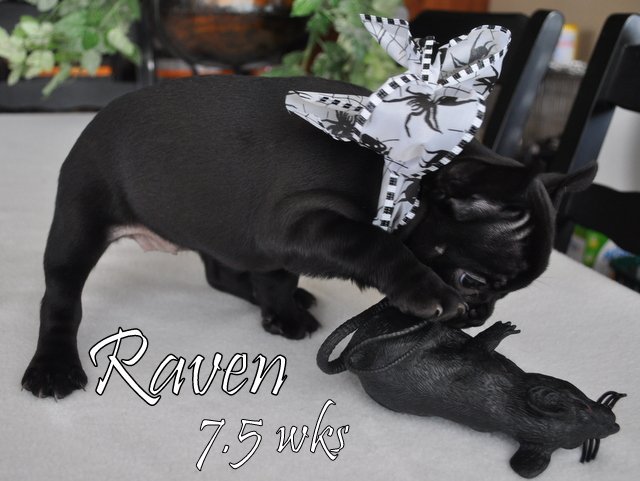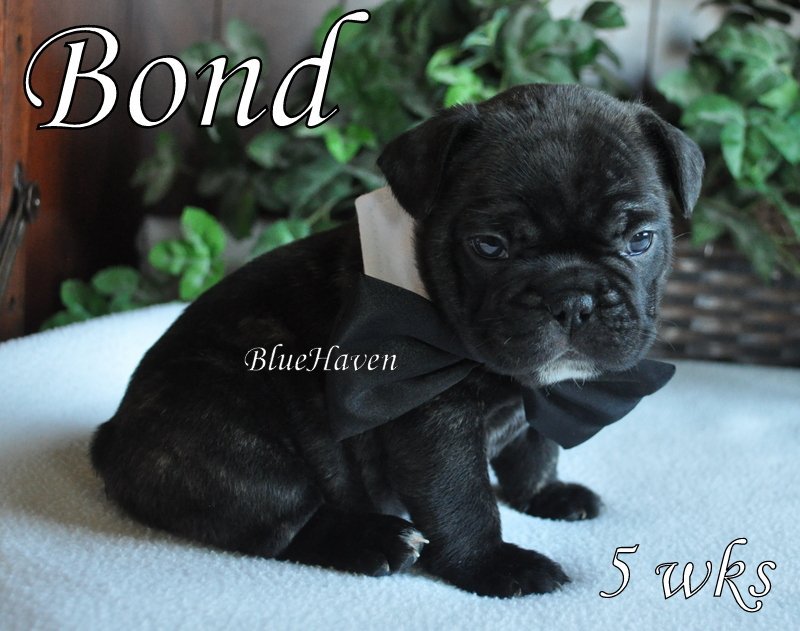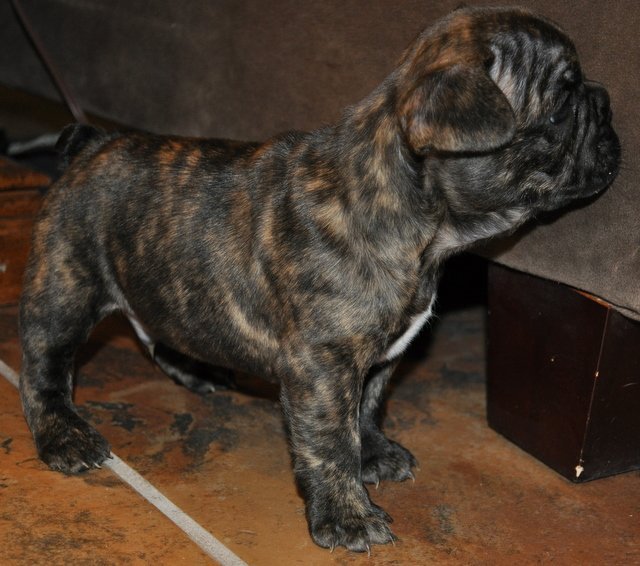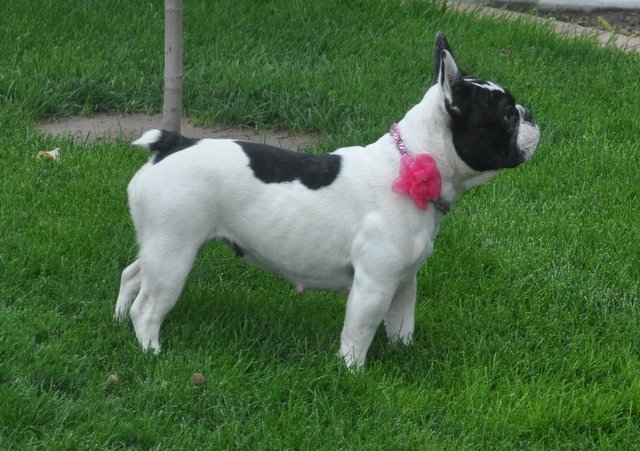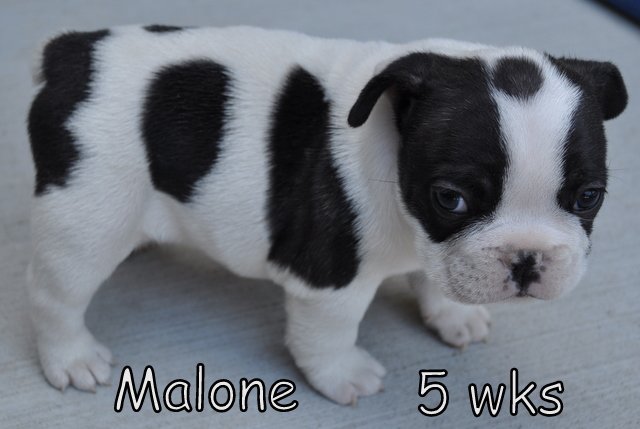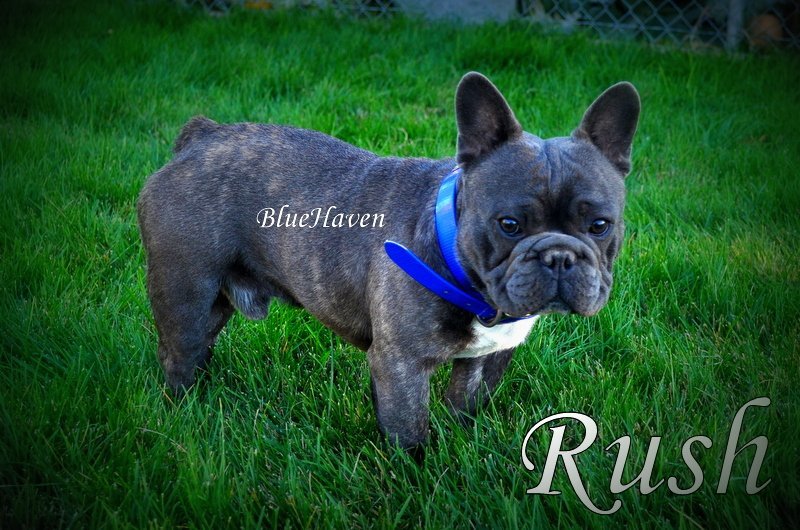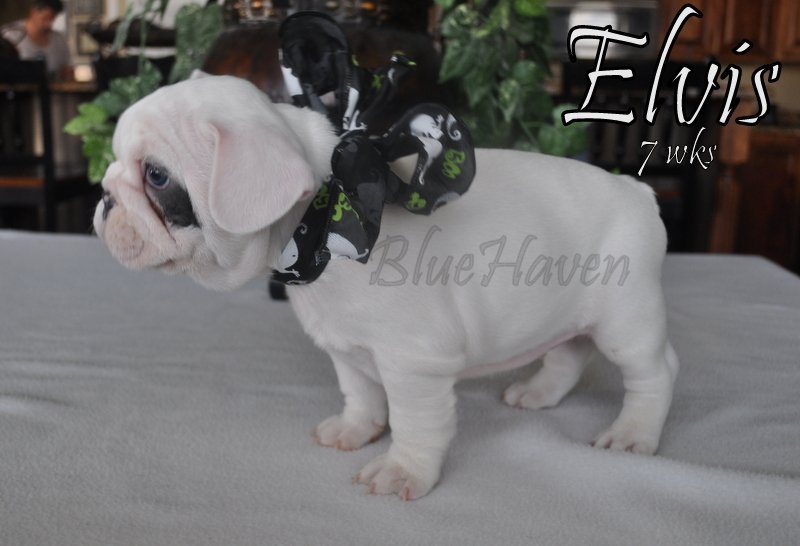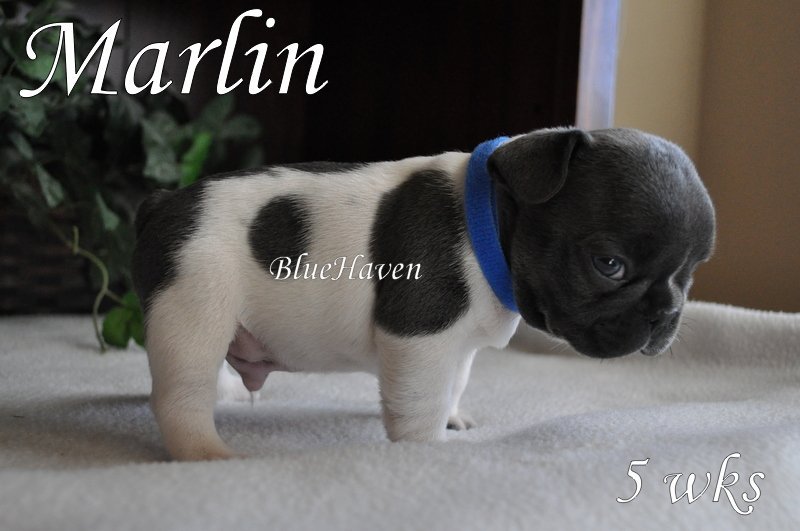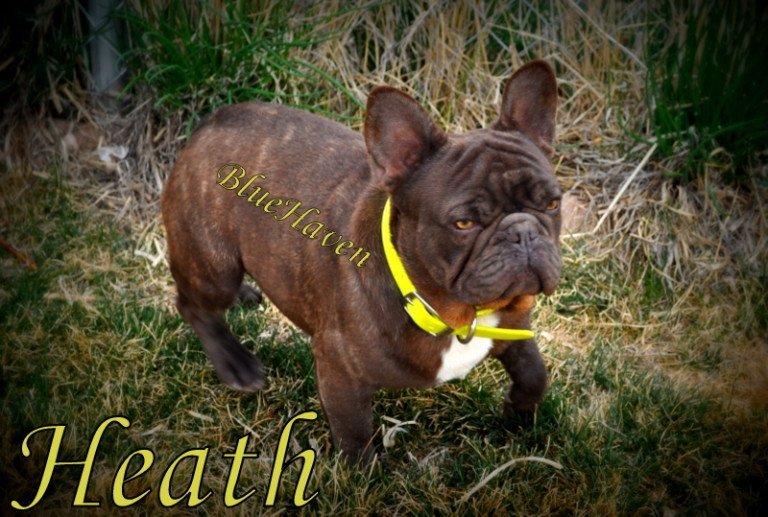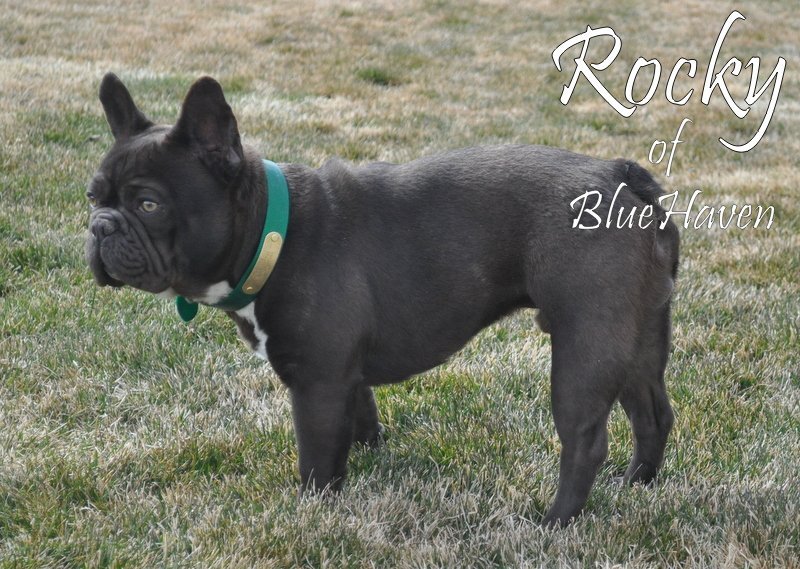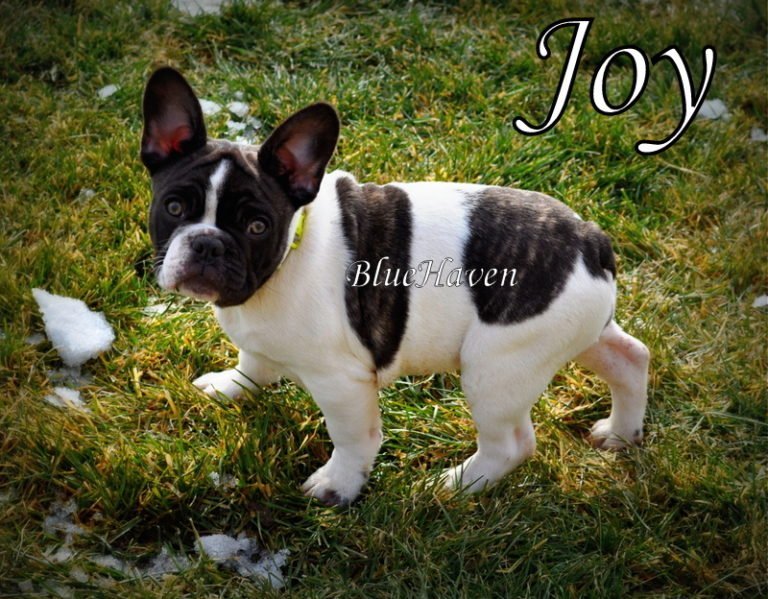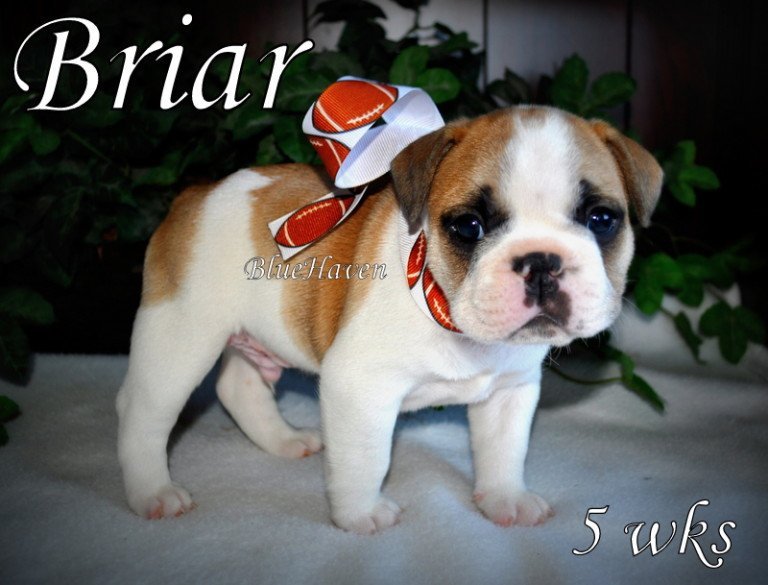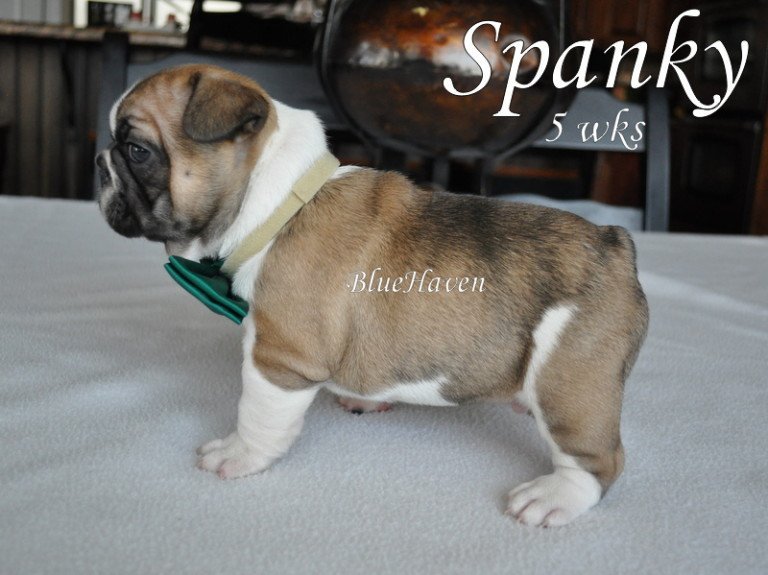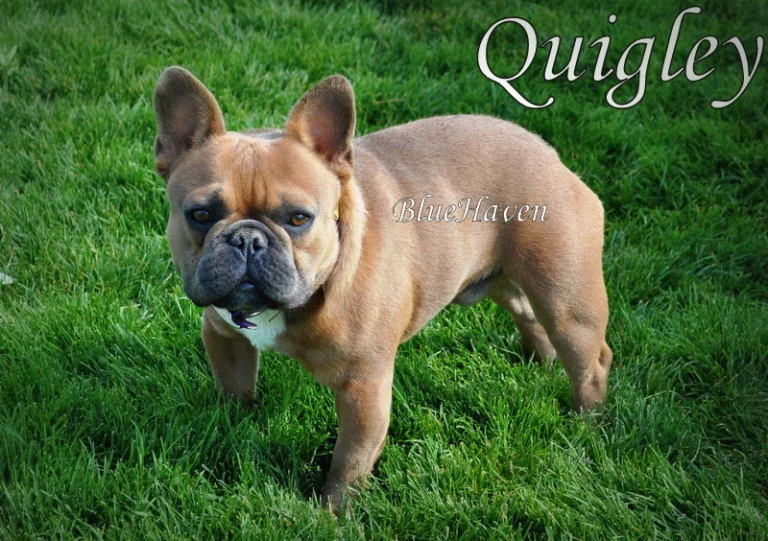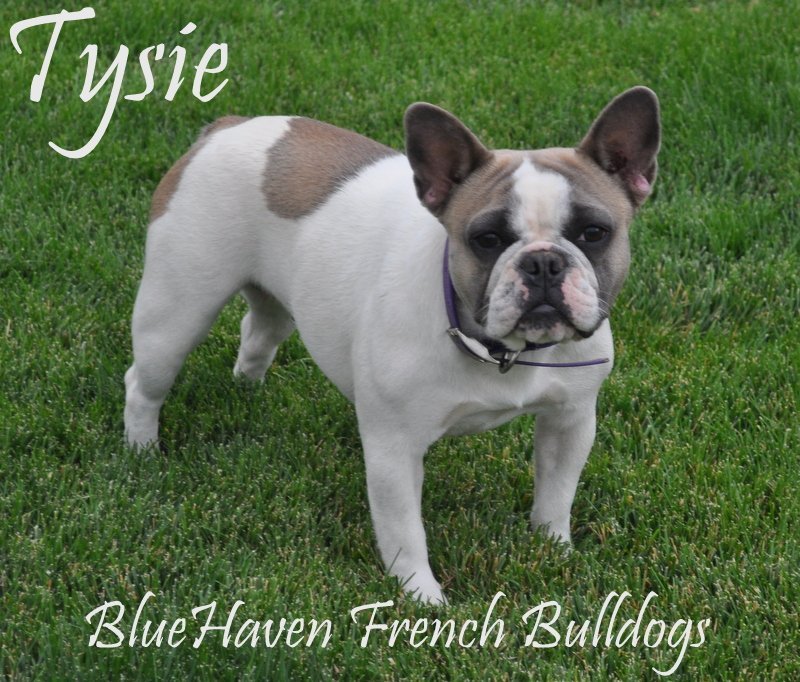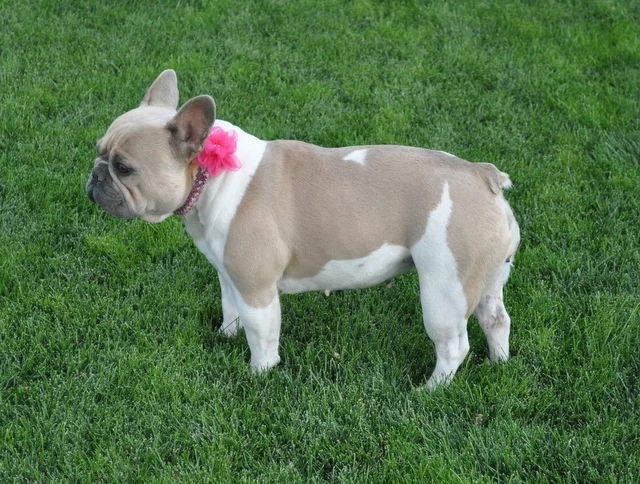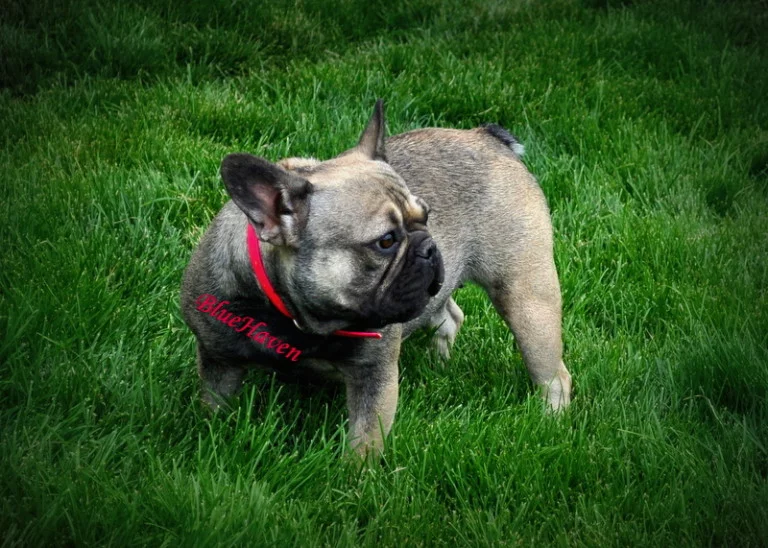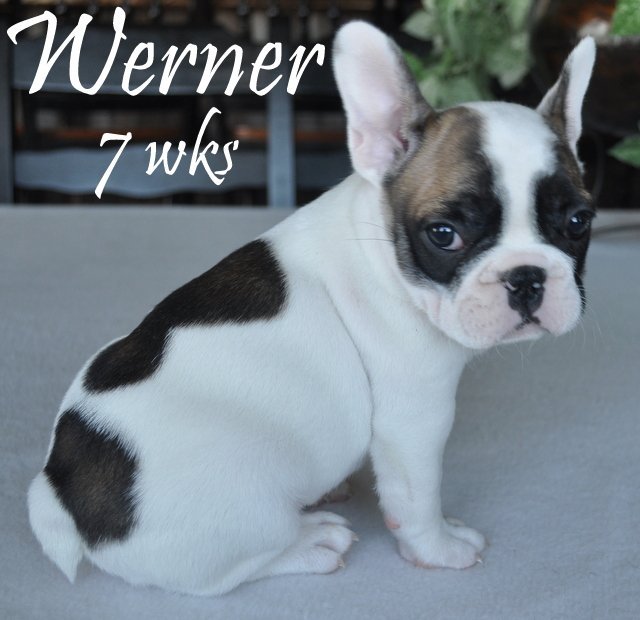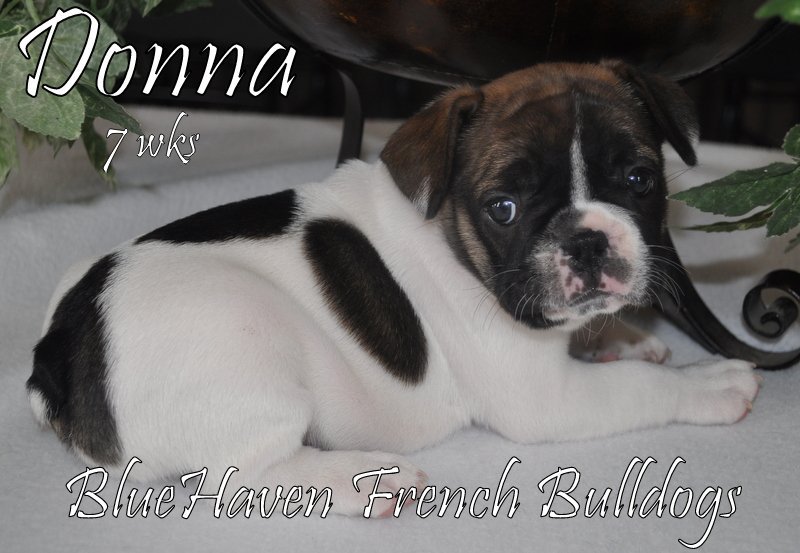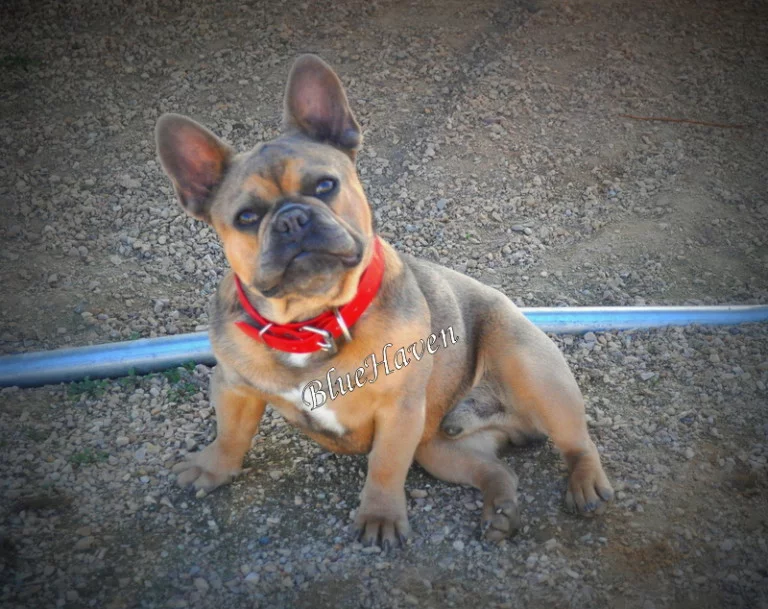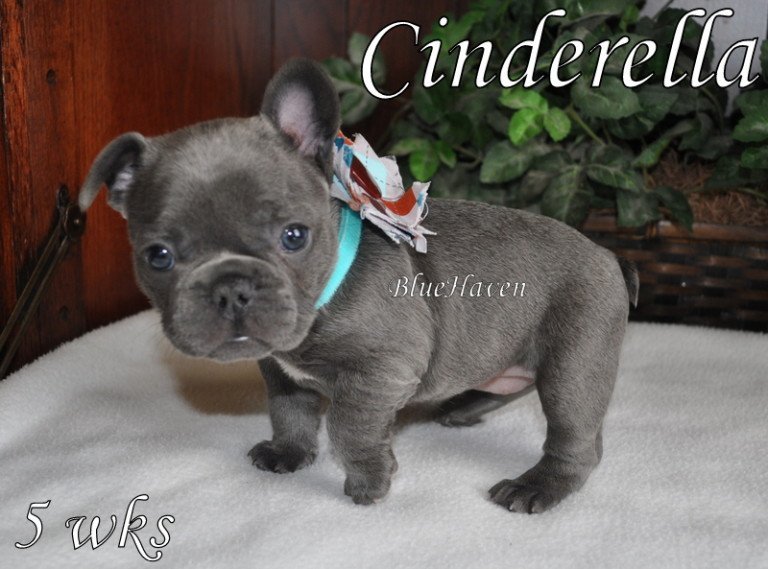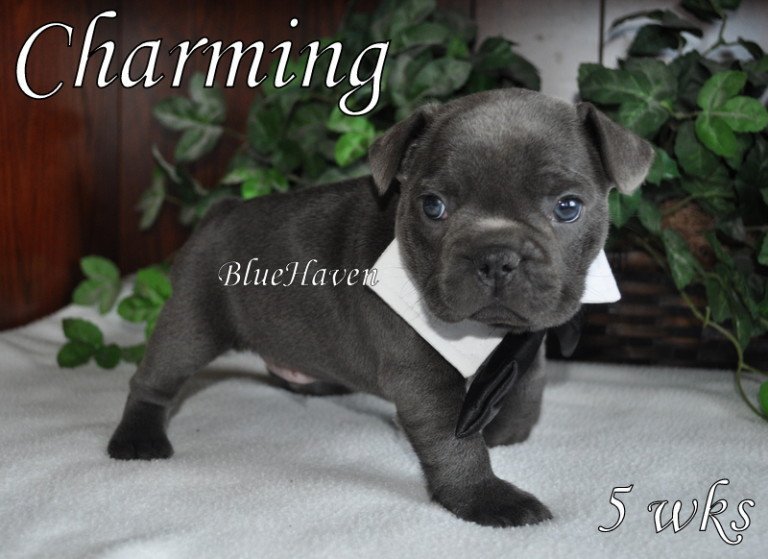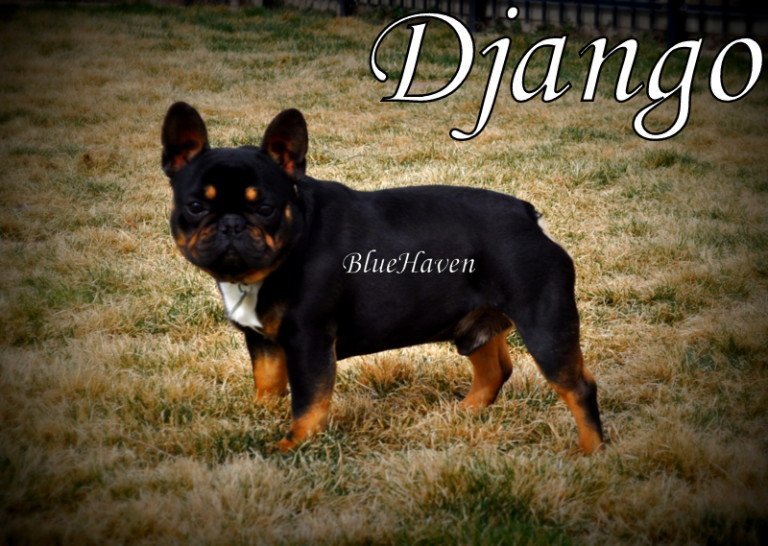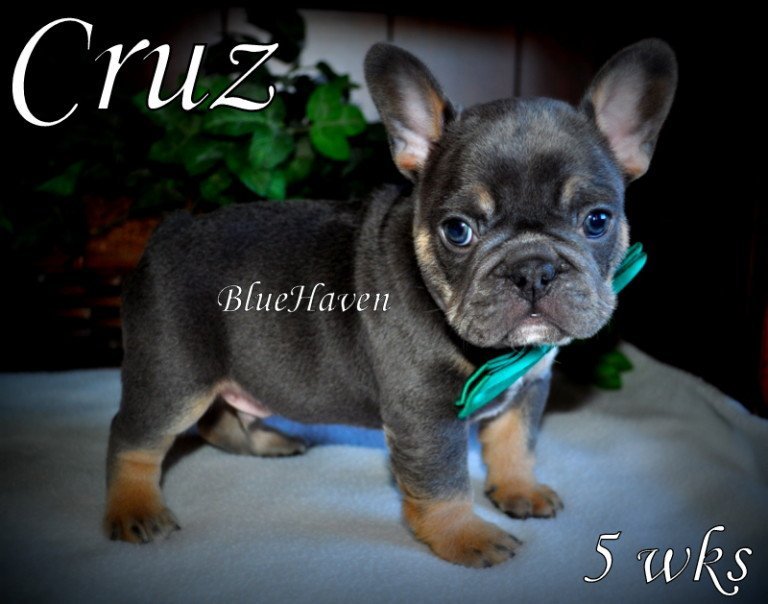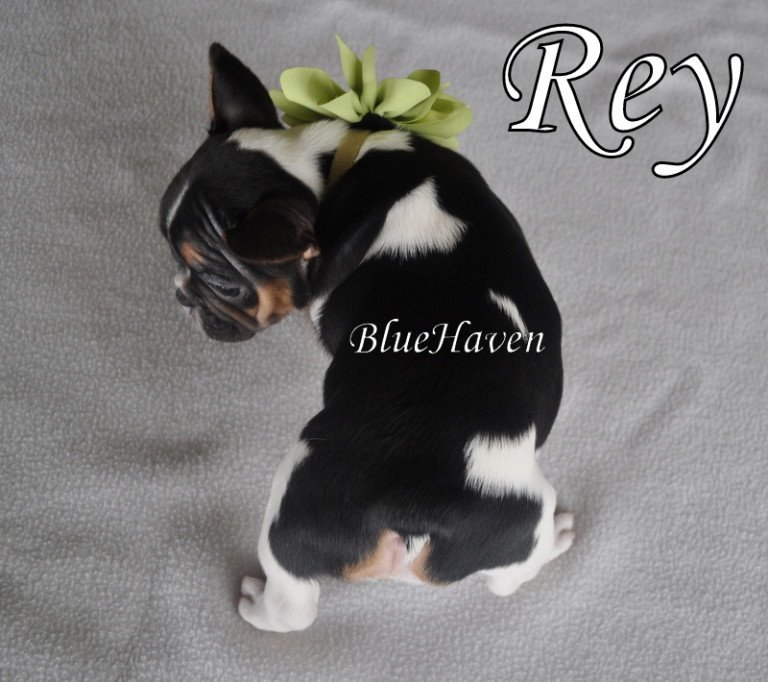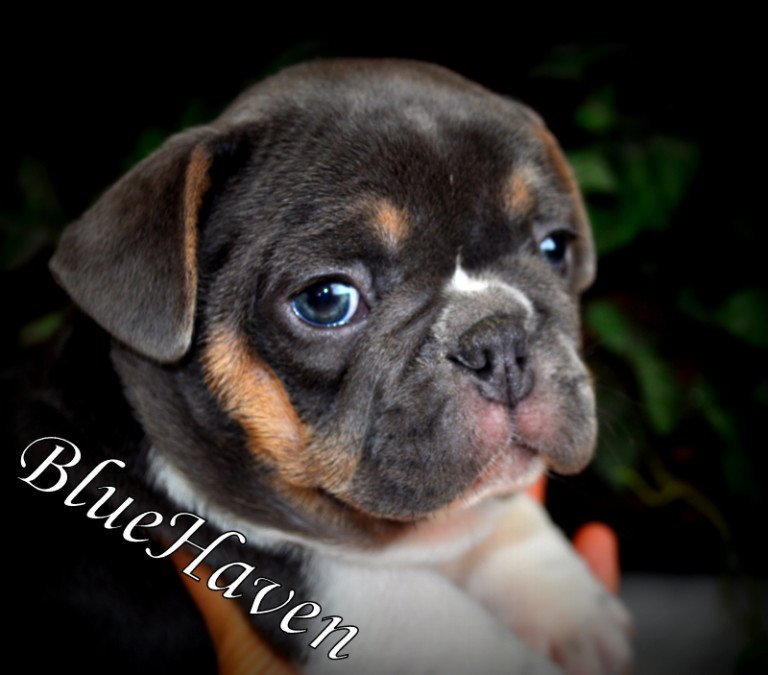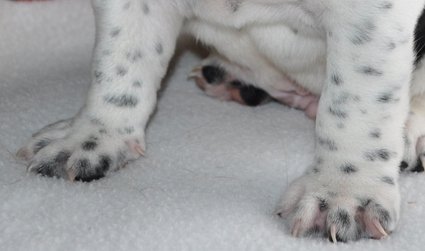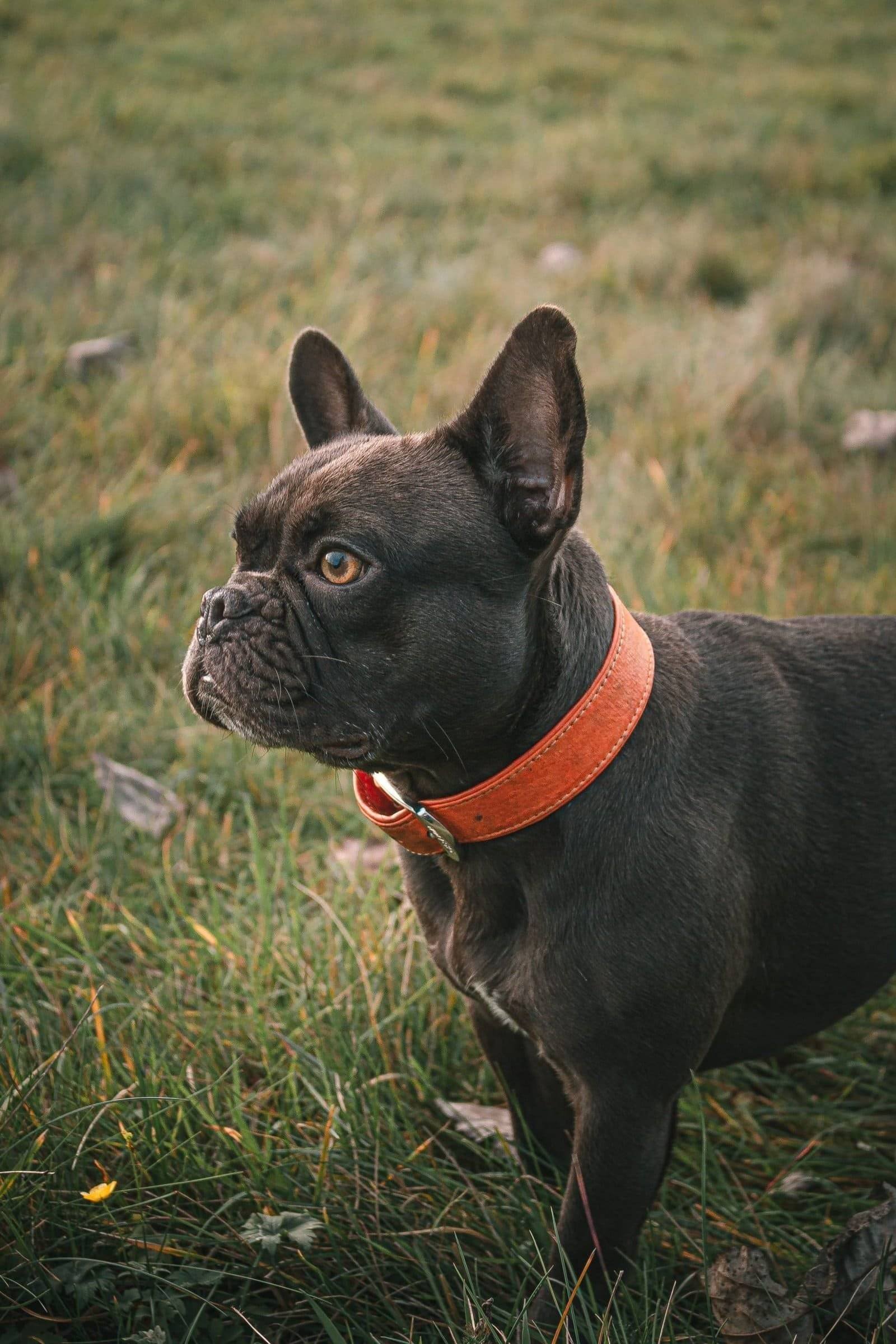What colors and color patterns do Frenchies come in?
In case you haven’t as yet read the AKC color standard, here it is: “Acceptable colors – all brindle, fawn, white, brindle and white, and any color except those which constitute disqualification. All colors are acceptable with the exception of solid black, mouse, or liver; black and tan; black and white; and white with black, which are disqualifications (for dog shows). Black means black without a trace of brindle.”
We will add here that the colors and color patterns of the French Bulldog are based on several different genes which interact with each other to produce the myriad of beautiful colors and patterns in which this gorgeous breed appears. As is the case with other genes, some are dominant and others are recessive, and there is a hierarchy within some of the recessive genes. For a recessive gene to be expressed, a puppy must inherit the recessive gene from both the mother and the father. If the recessive is inherited from one and the dominant from the other, the dominant will be expressed, but the puppy will also carry the recessive gene which can be passed on to future generations. Since the relative rarity and desirability of a Frenchie color and pattern is a significant factor in the pricing of Frenchie puppies, it is probably good to have an idea of how the various genes interact.
Without getting into too much confusing DNA verbiage, we can say that brindle is dominant over fawn and a uniform color is dominant over piedness (white coat with patches of a dark color). Chocolate is a recessive color in Frenchies. The dilute gene is recessive, which dilutes black to bluish gray, fawn to a blue hazed fawn, or chocolate to lilac.
Pure black with no brindling is due to the recessive black gene (a/a), as is pure blue (which is created by the double recessive black coupled with the double recessive dilute [blue] gene – a/a, d/d). Pure chocolate Frenchies have a double copy of “co” and a double copy of recessive black, and pure lilac Frenchies have double copies of “co”, “d”, and “a”. Pure black, pure blue, pure chocolate, and pure lilac Frenchies are not permitted in AKC sanctioned conformation events at this time, but hopefully this will change so that these extraordinarily rare and beautiful dogs can be properly admired and rewarded. Another color and pattern which is almost as rare and stunningly beautiful is the pure coat with tan points, which come in black, blue, chocolate, or lilac. These dogs have a double copy of the tan points gene (At/At) or a copy of tan points and recessive black (At/a). These rare and gorgeous dogs are also not allowed into AKC sanctioned conformation events at this time, probably due to the fact the genetics were not well understood when the guidelines were established many decades ago; someday we hope that this will change.
We think you can see that there might be some confusion over all of this variation, and there obviously is, so we will try to help clarify the different colors for you.
As we alluded, one of the many wonderful things about Frenchies is that they come in so many beautiful colors based on the color genes which are naturally occurring in the breeding population. The most basic color for the French Bulldog is black, but they also come in a myriad of other colors, e.g., many shades of fawn, blue fawn, and chocolate fawn; many shades of blue/gray; many shades of chocolate; cream; and lilac. We produce all of these gorgeous colors. Although a Frenchie can come in any of these colors, it is VERY common for solid colored Frenchies to have a splash of white on their chests. In addition, it is not uncommon for them to have a touch of white on the head, the neck area, the toes, or elsewhere.
And, best of all, in addition to Frenchies coming in these beautiful colors, there are pied Frenchies in each of these colors as well. In simple terms, a pied Frenchie is basically a white/eggshell colored Frenchie with one or more patches of a darker color. These are beautiful dogs and are all very distinct based on the number and size of the darker colored patches and the overall patterning. Some pieds are mostly white and have very little of the darker color, sometimes as little as one small patch around an eye, on the tail, etc. Most pied Frenchies have a few darker colored patches, but with still more white than the darker color. A few Frenchies, like Samson, have large areas of the darker colors on their coats with less white, sometimes much less white, than the darker color(s) (we call these blanket pieds – those with very little coloring besides white are called extreme pieds).
All of the colors mentioned above are created from genes that naturally occur in the Frenchie population, although some of these genes are quite rare. Recently, long haired Frenchies and merle Frenchies have started to spring up. To the best of our understanding, the genes that create these Frenchies have been introduced from other breeds. We have made the decision that we will not breed for these types of dogs as we do not believe it improves the breed or keeps it pure.
Below we will describe each of the different colors, along with posting a few pictures of each of the colors for reference, including pieds in each of these colors.
Brindle Frenchies
A brindle Frenchie has a coat that is predominantly a dark color with lighter colored hairs mixed in, sometimes in a uniform manner and sometimes quite random. Brindling (the lighter hairs) may be almost non-existent (called Seal Brindle) to very heavy (called Tiger Brindle or even reverse brindle if there are more lighter colored hairs than dark ones). The brindle gene on the K-locus (Kbr) is dominant over the fawn gene (Ky), so any puppy which has even one copy of the brindle gene from either the father or mother will be a brindle (assuming that they do not carry the dominant black gene, KB). Standard black brindle Frenchies, while very handsome, are the most common of all colors (since black is dominant over blue and chocolate) and therefore generally the least expensive. Frequently (actually, almost always), there are patches of white of varying sizes on the chests of brindle Frenchies, and also it sometimes occurs on the heads, neck areas, &/or toes of brindle dogs.
Here are some examples of several black brindle pieds with various amounts of patches. Not only are there different amounts of patches but within the patches there are different amounts of brindling, from very little like Brynlee, to quite a lot like Kristoff.
The more rare brindles are the gorgeous blue brindles and the stunning chocolate brindles with the piercing yellow/golden eyes. Blue brindle Frenchies are the result of the “d” or dilute gene, which they must inherit from both the mother and the father (kind of like blue eyes in humans). The dilute factor causes the black hairs to become blueish gray. Pigment on the nose and pads is also a grayish blue in color, and their eyes are generally from a light to a medium brown, often with hints of gold or green (although their eyes are blue up until they are a few months old). Just like black brindles, blue brindles will also have various amounts of brindle to their coats.
The chocolate brindle is another rare Frenchie color which can range from a light milk chocolate brown to a fairly dark chocolate-brown. Chocolate brindle Frenchies have brown to light brown noses and nails and a variety of gorgeous eye colors which really set them apart, especially the piercing yellow/gold eyes which our chocolate Frenchies have. Their eyes can also be a light brown, green, or hazel. Their eyes are very easily distinguished from the very dark to black eyes of standard brindle Frenchies and even the somewhat lighter brown eyes of blues and fawns. As with all the other brindles, chocolate brindles have varying amounts of brindling to their coats as well.
According to the AKC guidelines, all brindle dogs have acceptable coloring, including blue brindles and chocolate brindles, which are both naturally occurring recessive colorings. We are aware of several blue brindle and chocolate brindle Frenchies that have been entered into conformation competitions and have done well, although there are certainly some in the Frenchie community who still hold prejudices against them, as unjustified as that may be. Since both blue brindles and chocolate brindles are quite rare and beautiful, they command higher prices than standard black brindles and fawns, and we have neither seen nor experienced anything that would suggest that either the blues or chocolates have any higher incidence of health issues than standard colors, regardless of what some naysayers may spout.
Fawn
Fawn Frenchies can range from a very light tan to a dark reddish tan and everything in between, and, if you ask us, they are all very beautiful. They do not have any brindling in their coats, but generally most fawns are not completely uniform in color as the tint of the back, sides, and head/ears is often darker than the color of the lower body and legs. Since brindling is dominant over fawn, a puppy must inherit a copy of the fawn gene (Ky) from both the mother and the father to be a fawn. Even one copy of the brindle gene (Kbr) inherited from either the mother or father will create a brindle dog.
Blue-fawn
This is a color variation of blue, wherein a fawn coat is diluted with the blue hue being seen most clearly in the masking points on the face and on the upper body. They have grayish colored noses and pads and they generally have light to medium brown to green/grey eyes. These are also very beautiful and rare dogs. They range in color from a light blue fawn to a dark apricot blue fawn.
Cream
Cream Frenchies are considered by many to be fawns or diluted fawns, but in actuality they are created by a double copy of the recessive gene on the E-locus (e/e), which is the first locus in the color priority for Frenchies. Any puppy which is (e/e), regardless of what other color determinant genes it carries, will be a cream. Cream Frenchies have a uniform eggshell coloration (unless they are pieds, in which case the color patches on their eggshell bodies are a shade of fawn, often with an orangish tint).
Sable
Another fairly rare coloring for the Frenchie is sable. Sable Frenchies have fawn coats of various shades (from a light honey color to a dark red mohagany and everything in between) with the hairs being tipped in black, with other black hairs mixed in fairly evenly into the coat. The black tipping and shading tends to be more heavy on the upper body; and often the lower legs are without evidence of black. Many of them develop the appearance of tan points on the lower legs, cheeks and brows like you would see on black and tans, blue and tans and chocolate and tans.
Blue Sable and Chocolate Sable
Sables which carry a double copy of the dilute (blue) gene are called blue sables and a double copy of the recessive chocolate gene are chocolate sables. They are similar in their coloration to the sables except that the black hairs are diluted to a bluish or chocolate hue (d) instead of their mask being a black mask, such as the standard sables, they will be blue or chocolate respectively.
Dark blue sable
A fairly rare color for the Frenchie, as well as one of the most beautiful, is the dark blue sable. They do not carry a copy of the brindle gene, even though their color is similar to that of the blue brindle and not the blue fawns or sables. They have no brindling in their coats so they appear very similar to the pure blues, but they are not the pure blues as described below as they do not carry a double copy of the recessive black gene (a), although the ones which we have produced to date carry either a single copy of the recessive black gene (a) or the tan points gene (at).
Below are extremely rare Frenchie colors that are disqualified by the AKC for conformation competitions, but they are extremely beautiful and command very high prices:
Pure Black, Pure Blue, and Pure Chocolate – Pure black Frenchies (Frenchies with a black coat with no brindling) are disqualified for conformation competitions, probably because it was initially thought that this was a dominant characteristic and would overpower other colors. It is now known that pure black is caused by a recessive gene on the A-locus which is rare and must be inherited from both parents. These are very beautiful and expensive dogs. The pure blues and pure chocolates are even more rare in that pure blue and chocolate Frenchies (blue with no brindling) must inherit both the recessive black gene and the recessive dilute gene or recessive chocolate gene from both parents. Pure black, pure blue, and pure chocolate Frenchies also come in pieds when one of these puppies also inherits the recessive pied gene from both parents.
Black & Tan, Blue & Tan and Chocolate & Tan
These are amongst the rarest of the French Bulldog marking patterns and colors. They are also disqualified for conformation competitions because initially black & tan was thought to be a dominant marking pattern, as it is in other canine breeds like Doberman Pincers and Rottweilers. It is now known that black & tan in Frenchies (black with tan points) is the result of a recessive gene which is naturally occurring but very uncommon in Frenchies. Even more rare are the blue & tan (blue with tan points) and chocolate & tan Frenchies since both the recessive tan points (or tan points and recessive black) and the recessive dilute (blue) genes must be inherited from both parents. Both black & tan Frenchies, blue & tan Frenchies and chocolate & tan Frenchies all come in pied as well, if both mom and dad are pied or carry the recessive pied gene.
Frenchies having any of these colors and patterns are very beautiful, very rare, and very expensive; but if you are looking for a unique and special Frenchie that very few individuals in the world are lucky enough to own, one may be just what you are looking for. While Frenchies of these colors and patterns cannot currently be entered into conformation competitions, they are just as healthy and just as wonderful in every way as their brothers and sisters which have more common coloration.
Lilac
The most rare of all Frenchie colors are the Lilacs. Not only do Lilacs possess a double copy of the dilute blue gene but they also have a double copy of the chocolate gene. Therefore, if a Lilac male is bred to a blue girl, all of the puppies will be blue, or if a Lilac male is bred to a chocolate girl, all of the puppies will be chocolate. Like Chocolates, Lilacs will have the brilliant eyes. Lilacs also come in Lilac fawns, pieds, tan points, with recessive black etc. We have two Lilac fawns who carry tan points and will update our website with pictures and videos once we produce some of the above colors to show as examples.
Acceptable, but penalized, coloring:
Ticked pied
This refers to pied Frenchies that have abundant amounts of freckled markings on the white areas of the body. This is not a DQ for the AKC, but this pattern tends to be heavily penalized in show rings everywhere. The more white a Frenchie has, the more likely it is to have ticking, although there are some pied dogs which are mostly white and have virtually no ticking (such as our Bryn, who has no ticking at all, although she has a lot of white). Some individuals really like Frenchies with a lot of ticking regardless of what the AKC penalizes (we like to call them beauty marks), so it is really a matter of personal taste.
Wrap-up:
Hopefully, this helps you better understand the colors and patterns available for this wonderful breed. It is quite a variety for sure, and we are producing almost all of these colors and patterns now, and we expect to be producing all of them in the near future so that we have the perfect puppy for each of our valued clients.

